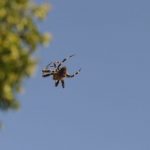 Technology
Technology  Technology
Technology  Humans
Humans 10 Everyday Human Behaviors That Are Actually Survival Instincts
 Animals
Animals 10 Animals That Humiliated and Harmed Historical Leaders
 History
History 10 Most Influential Protests in Modern History
 Creepy
Creepy 10 More Representations of Death from Myth, Legend, and Folktale
 Technology
Technology 10 Scientific Breakthroughs of 2025 That’ll Change Everything
 Our World
Our World 10 Ways Icelandic Culture Makes Other Countries Look Boring
 Misconceptions
Misconceptions 10 Common Misconceptions About the Victorian Era
 Mysteries
Mysteries 10 Strange Unexplained Mysteries of 2025
 Miscellaneous
Miscellaneous 10 of History’s Most Bell-Ringing Finishing Moves
 Technology
Technology Top 10 Everyday Tech Buzzwords That Hide a Darker Past
 Humans
Humans 10 Everyday Human Behaviors That Are Actually Survival Instincts
 Animals
Animals 10 Animals That Humiliated and Harmed Historical Leaders
Who's Behind Listverse?

Jamie Frater
Head Editor
Jamie founded Listverse due to an insatiable desire to share fascinating, obscure, and bizarre facts. He has been a guest speaker on numerous national radio and television stations and is a five time published author.
More About Us History
History 10 Most Influential Protests in Modern History
 Creepy
Creepy 10 More Representations of Death from Myth, Legend, and Folktale
 Technology
Technology 10 Scientific Breakthroughs of 2025 That’ll Change Everything
 Our World
Our World 10 Ways Icelandic Culture Makes Other Countries Look Boring
 Misconceptions
Misconceptions 10 Common Misconceptions About the Victorian Era
 Mysteries
Mysteries 10 Strange Unexplained Mysteries of 2025
 Miscellaneous
Miscellaneous 10 of History’s Most Bell-Ringing Finishing Moves
Ten Animals with More Interesting Sex Lives Than You
The animal kingdom is full of weird and wonderful creatures having weird and wonderful sex. After all, reproduction is one of the core processes of life. So why not do it in style? Perilous journeys to find a partner. Elaborate mating rituals. Shocking acts of passion and lust. Nature has it all.
From self-pleasuring monkeys to hooligan penguins, here are ten animals whose sex lives have left biologists with open mouths.
Related: 10 Extraordinary Animal Migration Journeys
10 Leopard Slugs Take Part in a Mystifying Mating Dance
Leopard slugs have one of the strangest mating dances in the animal kingdom. The chunky critters dangle from trees and rocks on a thread of mucus, twisting into each other and thrusting their penises out of the side of their heads. The tryst ends with the pair exchanging sperm, then eating the slimy ropes as they slither away.
Like most land slugs, leopard slugs have both reproductive organs. Their penises can measure up to 35 inches (90 cm) long in some species. After the courtship ends, they can hold onto sperm for months, sometimes years. The slithers have been known to eat most of it and only keep a small amount for fertilization.[1]
9 Female Dolphins Feel Pleasure through Fully Functioning Clitorises
Female bottlenose dolphins feel sexual pleasure in a similar way to human women. So says a 2022 study in Current Biology. Researchers at Mount Holyoke College discovered that the mammals have a developed clitoris, offering a new insight into underwater arousal.
The team found clitoral tissue that swells when stimulated, like in humans. They also found large bundles of nerves in a highly sensitive area where the skin is three times thinner than usual. Scientists reckon our bottlenose buddies enjoy sex not just to get pregnant but for the thrill of it. The creatures are known for courting at all times of the year.
Gender is no barrier to bottlenose dolphins, the study says. The marine mammals are also fond of same-sex acts, which can help strengthen social bonds.[2]
8 Male Roundworms Risk Their Lives for Sex Due to Brain Receptor
Male roundworms will face all kinds of peril to get laid. The little wrigglers are willing to put their lives at risk for a chance to mate and often struggle to learn from experience. Their reckless behavior is caused by a protein in their brains called NPR-5. Scientists found that when fertile mates are around, and the male worms have lust on their minds, they become far less likely to respond to danger.
“We know that male worms will abandon food to look for a mate,” explained researcher Meital Oren-Suissa. “So it is possible that their urge to procreate overcomes other evolutionary pressures, such as the need to avoid danger.”[3]
7 Salamanders Will Travel Miles for a Quickie
Mole salamanders can trek over 9 miles (14 km) to mate. The journey may be fraught with risk—harsh terrain and lurking predators included—but the stubby-legged amphibians plow on for a chance at courtship.
Scientists were so intrigued by the mole salamander’s crusade that they decided to study it. A team from Ohio State University placed the amphibians on specialized treadmills and invited them to walk with a light tap or tail pinch. When it comes to reproduction, there are two types of mole salamanders. One group breeds through sex and is split into males and females, while the other is asexual, made up of female hybrids. Researchers found that the breeding salamanders hiked on the treadmill four times longer than the asexual ladies.
“Perhaps the more interesting question is why the all-female salamanders don’t go very far, and we think that has to do with the physiological costs of not having sex,” lead author Robert Denton told reporters. “Essentially, not mixing up your genomic material often enough likely causes some problems for genes you need to make energy.”[4]
6 Extinct Trilobites Used to Joust for Sex
Males have been fighting for sex for over 400 million years, according to a 2023 study. Extinct marine creatures known as trilobites are thought to have jousted using trident-like structures on their heads. Scientists reckon that the invertebrate males competed to display their dominance.
It is believed that the creatures used their tridents to try to flip each other over. The victorious male would then have time to mate while his rival struggled to turn himself the right way around. Evidence suggests this is one of the earliest examples of sexual competition ever seen.
As Richard Fortey from the National History Museum put it: “The extraordinary Devonian trilobite Walliserops carried a unique, giant trident on its head, the purpose of which has long been a mystery. We now believe that it was used for jousting between males striving for dominance. The evolution of sexually motivated competition in animals is hundreds of millions of years older than we thought.”[5]
5 Graphic Penguin Sex Shocked Polar Explorer
When Captain Scott’s intrepid team arrived at the South Pole in 1910, one member was taken aback by what he discovered. George Murray Levick took notes on the graphic sex lives of Adélie penguins, which he described as “depraved.” The biologist was so shocked that he felt the need to write in Greek.
When Levick’s papers were published, the sexual details were scrubbed from all official versions. However, some original copies remained at the Natural History Museum in London. They describe “hooligan” males mating with live and dead females, sexual coercion and abuse, and taking part in same-sex acts. In 2012, the museum released Levick’s notes in full.[6]
4 Monkeys in Bali Use Stones as Sex Toys
Long-tailed macaques in Indonesia have found a new use for stone tools: masturbation. Horny primates at the Sacred Monkey Forest Sanctuary in Bali are tapping and rubbing stones against their genitals for pleasure. In a study of over 170 macaques, researchers saw stone sex toys used by monkeys across the board. Male and female, young and old—all found joy in self-pleasure.
Biologists at the University of Lethbridge in Canada found some differences between the sexes. Young males are the most enthusiastic users, while females tend to be more choosy about which stones to rub themselves with.
“You do see this genital stone tapping and rubbing quite regularly,” lead author Camilla Cenni told reporters. “They are not, of course, constantly doing it, but if you stop and see them and they start playing with stones, they are likely going to do it.”[7]
3 Fish Sex Sometimes Results in the Creation of a New Species
Female fish need to be careful when choosing a mate. If they mistakenly breed with a male outside their breed, they could inadvertently create a brand new species. Sometimes, if the female cannot see clearly or if the male’s coloring catches her eye, she might stray from her usual type. Their offspring inherit a hodge podge of genes from both parents, which can lead to a new species.
Scientists believe this happened around a million years ago in Lake Mweru, a large freshwater pool in East Africa. Cichlids mated with each other, creating hybrid offspring and spawning the evolution of 40 new species.[8]
2 Female Giraffes Urinate into Their Partner’s Mouths
Giraffes have one of the strangest mating styles in the animal kingdom. The long-necked mammals carry out a urine test to see who takes their fancy. A male bull nudges a female cow and sniffs her crotch. This is the signal for her to pee into his mouth so he can check if she is fertile. The male then bares his teeth, curls his lip back, and inhales, something known as the Flehmen response. Other animals conduct a similar sniff test once the female has peed on the ground, but the giraffe is too tall.
Like with most mammals, the male mounts the female. The intercourse only lasts a few seconds. Both animals tower above the ground. It can be tricky for a giraffe to find a mate, though. In a 2023 study, researchers followed dozens of giraffes up close at Etosha National Park in Namibia. They saw males approach females nearly 150 times, but only once did it result in mating.[9]
1 Aussie Marsupials Can Die After Sex, or Even Turn into Cannibals
Animals down under like to live fast and die young. Tiny marsupials like the antechinus hold an intense mating season that features marathon sessions lasting as long as 14 hours. The creatures are fired up, the males’ testes are enormous, and they want to have as much sex as their bodies can handle.
The surge of hormones kills the males after one to three weeks. Stress and excitement levels become so high that their tiny bodies shut down. The females are left in a state of exhaustion, desperate to refuel. In the cold of winter, with little food around, scientists have seen antechinuses feast on the carcasses of their former partners. Researchers say it is an easy source of nourishment for marsupials who need a boost before they throw themselves back into the sexual frenzy. For the new mothers, it also gives them the energy to look after their young.[10]








